It is common knowledge that in terms of sophisticated horology and luxury timepieces it has been Switzerland first for hundreds of years. And it may well be Switzerland first for a few hundred more (though that’s certainly not a given).
Excellence, innovation, and creativity are just some of the noble values born out of the Helvetian watchmaking heritage. They are synonymous with the finest timepieces from this small country in the heart of Europe. Their birthplaces – the Jura Valley, the Vallée de Joux, and the watch “metropolises” Geneva and Biel – are pilgrimage sites for aficionados.
But who am I telling this to?
I think we all agree that when it comes to watches it’s not dissimilar to mountains, chocolate, and cheese: Switzerland is the bee’s knees.
When we talk about Germany, we do not necessarily think of watches: luxury cars, high-tech machines, and Oktoberfest spring to mind.
The “made in Germany” predicate is generally associated with quality, well-designed products, added value, and longevity. But watches?
Yes, watches.
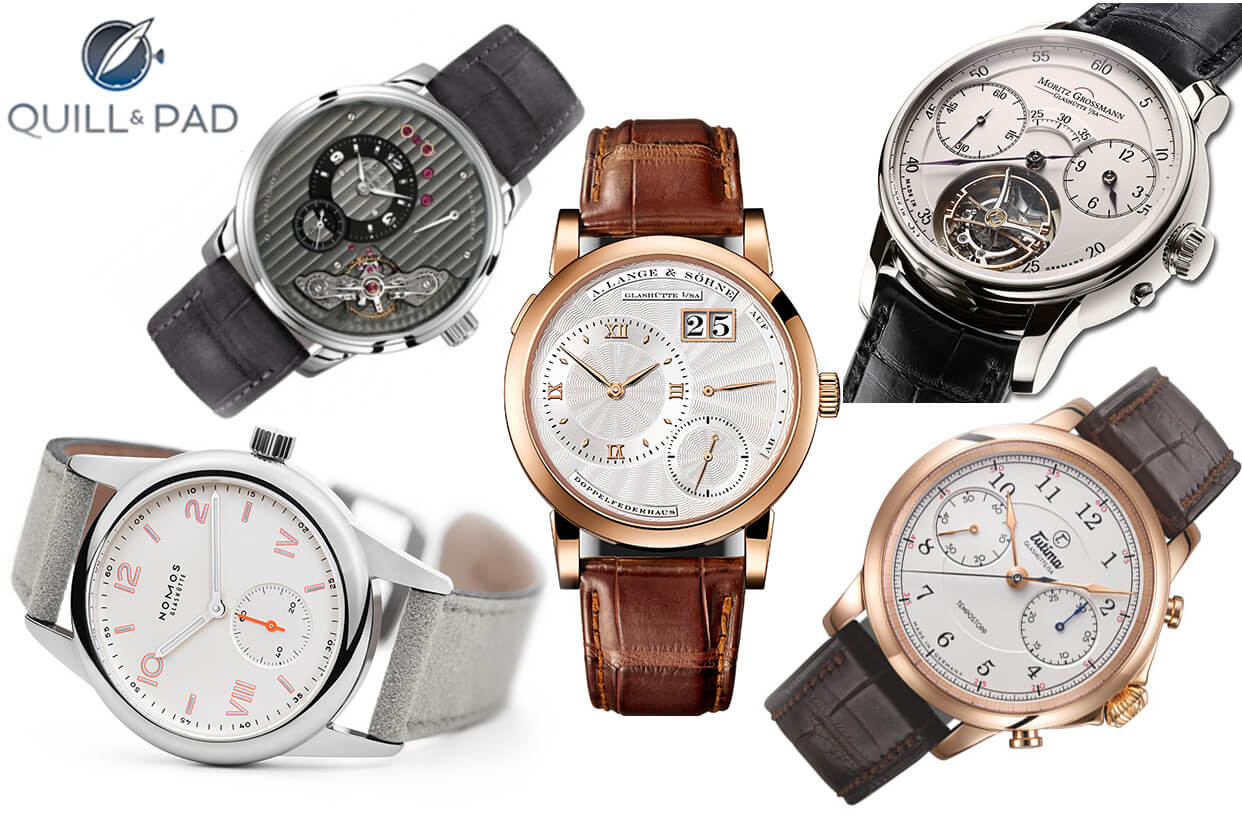
Fine German watchmaking from A. Lange & Söhne, Tutima, Nomos Glashütte, Moritz Grossmann, and Glashütte Original
Germany, a country of poets and thinkers, offers a stunning variety of timepieces covering all styles and price ranges, from the most affordable to the highest quality rivaling any Swiss maker.
Germany is the fifth largest export country in the world in watches after Switzerland, Hong Kong, China, and France. More than 100 watch companies with approximately 4,000 employees are spread across the country with two major production locations in the south (Pforzheim/Black Forest) and east (Dresden/Glashütte).
German watch exports reached around €1.7 billion in 2016, a drop of 16 percent from 2015. Compared to Switzerland with its current export value of 19.4 billion Swiss francs, Germany claims only a small piece of the horological pie, but one with delicious icing when it comes to luxury timepieces from Glashütte.
Over the past three decades, Germany has once again developed into a significant production center for timepieces. The main reason behind this success is certainly Germany’s reunification at the beginning of the 1990s after the fall of the Berlin Wall in 1989.
This historical milestone ignited a new heyday of watch production in Glashütte.
Glashütte: a long and noble horological tradition
Glashütte is a small Saxon town, nestled in the Ore Mountains near the Czech border, drawing on a more than 170-year-old tradition of sophisticated watchmaking. If you look on a map you might have a hard time spotting Glashütte because it is really tiny with only around 7,000 inhabitants.
If you first visit the buzzing and beautiful city of nearby Dresden, a beautiful gem of baroque architecture that is also rich in watchmaking history, on first sight you might think Glashütte does not have much to offer: just a handful of restaurants and cafés, a kebab shop, and plenty of untouched nature that entices mountain bike tours and hikes.
However, if you are into watches, I promise you will be on cloud nine.
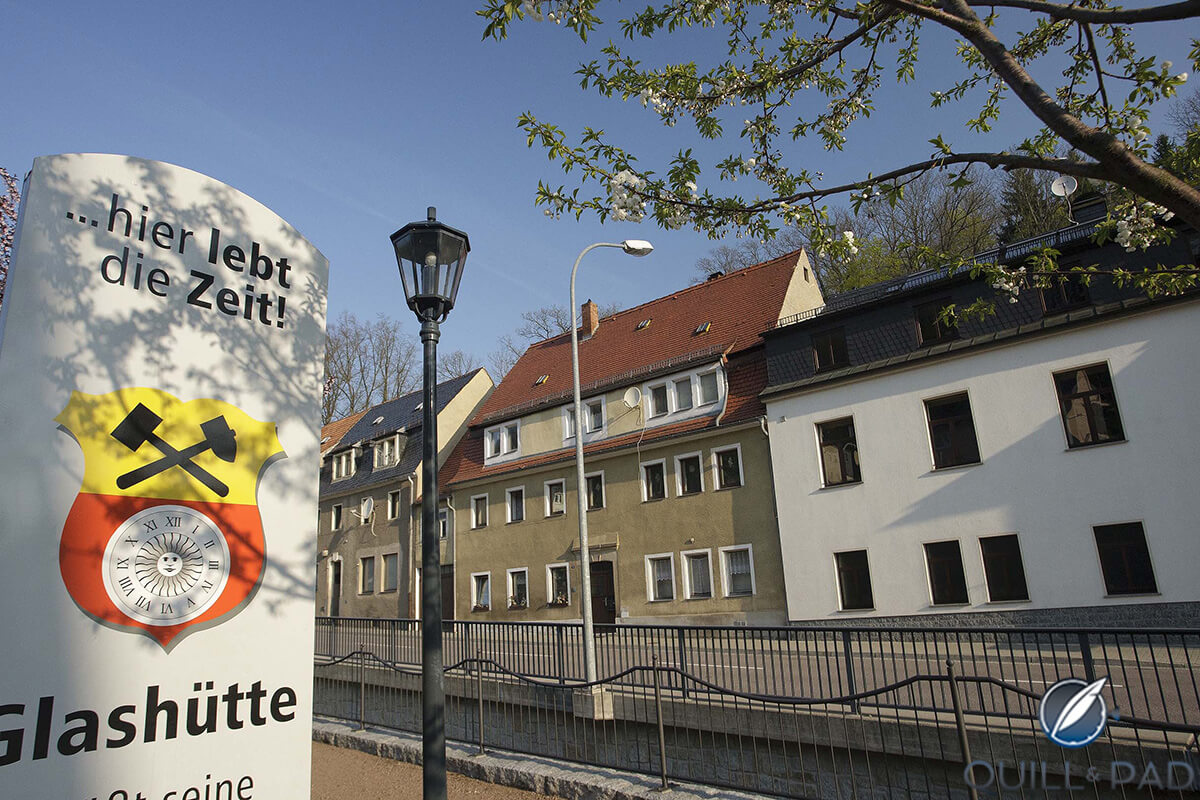
A modern view of Glashütte
“Time lives in Glashütte,” the sign reads in German as you enter the town limits. And time has been at home here ever since Ferdinand Adolph Lange, a former apprentice of master watchmaker Johann Christian Friedrich Gutkaes, who engineered the famous Five-Minute Clock for the Semper Opera in Dresden, established the watchmaking industry in Glashütte following extensive journeyman years in France, where he worked for Austrian clockmaker Joseph Thaddäus Winnerl and studied astronomy and physics at the Sorbonne in Paris.
Back in Lange’s time, Glashütte was a bitterly poor village, however he had the vision and entrepreneurial spirit to transform the town into a highly specialized watchmaking center similar to the ones already existing in England, Switzerland, and France.
With the financial support of the Royal Saxon Ministry of the Interior, in 1845 Lange was able to found a small workshop and hire 15 apprentices. Thanks to his genius and absolute commitment to the measurement of time, Lange pioneered a number of innovations that are still in use, including the famous three-quarter plate.
Being larger in size than the finger bridges typically in use in Swiss movements, the three-quarter plate can easily support the entire gear train on one piece, thereby keeping the gears very stable. He also revolutionized production by dividing labor and specializing every step in the manufacturing process.
Modern machinery, such as foot-driven lathes, allowed for improved fabrication of round parts such as pivots, pinions, and wheels.
Additionally, Lange introduced the more logical and efficient metric system to watchmaking.
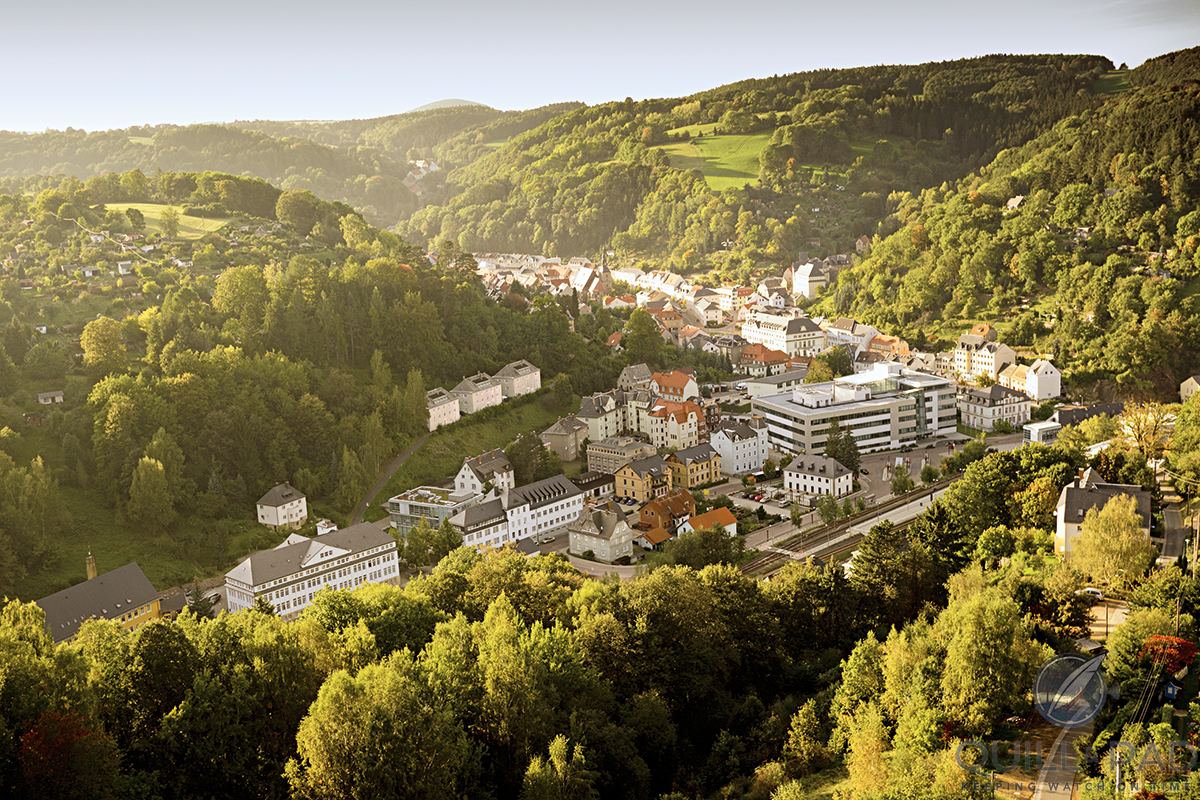
The city of Glashütte (photo courtesy A. Lange & Söhne)
Lange was well ahead of his time and not only in terms of precision and production methods, he also brought education, work, new prospects and, ultimately, prosperity to the region. More and more workshops and suppliers popped up along the banks of the Müglitz River, some of which originated with Lange’s own trained apprentices. They manufactured all components from the movement to the case, hands, and dials – you name it, Glashütte had it.
Glashütte was entirely independent from Swiss production, it was like an early Silicon Valley of horology.
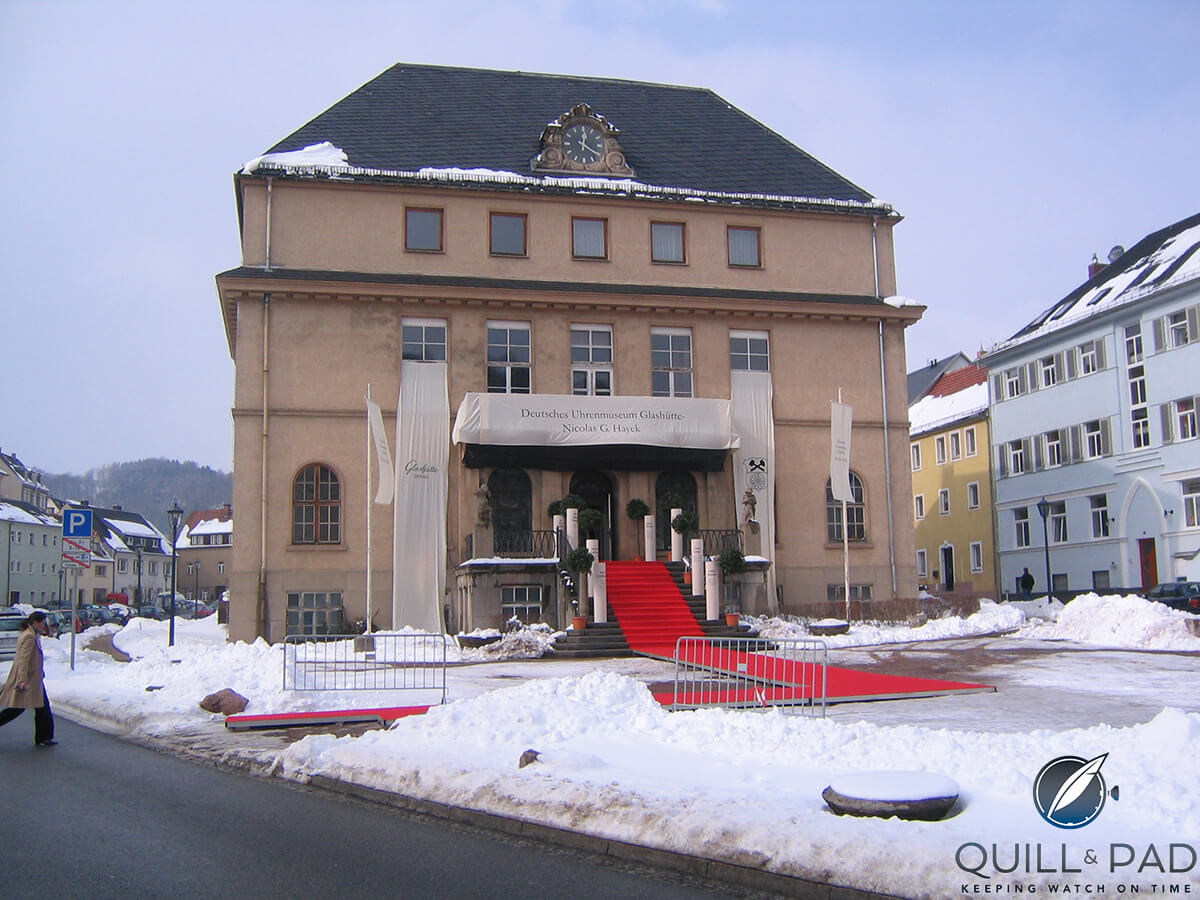
The German Museum of Watchmaking in Glashütte is housed in the first School of Watchmaking’s building established in 1878
Glashütte: a town full of inventors and visionaries
A host of skilled master watchmakers like Carl Moritz Grossmann, who specialized in the making of tools, fine pocket watches, and escapement models, settled in Glashütte. Grossmann also led in establishing the first School of Watchmaking in Glashütte, which opened its doors to eager students in May 1878.
More than 4,000 watchmakers and precision mechanics trained here up to 1951, ensuring that technical know-how and craftsmanship were handed down from generation to generation in Glashütte.
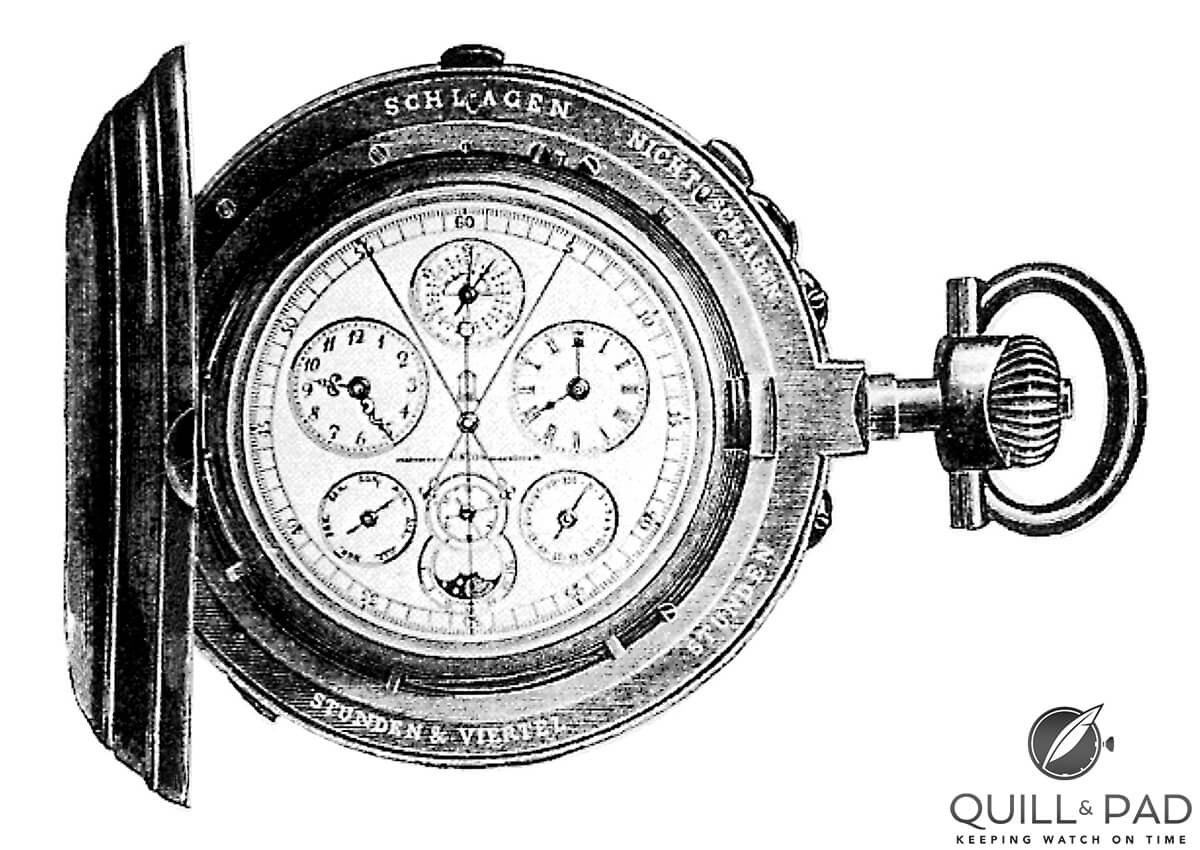
The Union Universaluhr, which came forth from Johannes Dürrstein’s company, was for many years the most complicated pocket watch in the world with 18 complications
Another figure closely linked to the success story is Johannes Dürrstein, a watch trade specialist originally from Frankfurt who founded a wholesale company, later followed by his own manufactory called Union, founded in 1893, which today lives on as a “sibling” brand to Glashütte Original (both now owned by Swatch Group). Watches by Union Glashütte are currently only sold within Germany.
By the turn of the century, Glashütte had earned a reputation as a maker of some of the most accurate chronometers in the world as well as highly beautiful ones in terms of finishing.
Glashütte timepieces kept precise time in observatories, on ship decks all over the world, and helped important discoverers, like Roald Amundsen and Alexander von Humboldt, navigate their adventures. Glashütte’s success story continued through the first quarter of the new century with even more famous watchmakers arriving on the scene, master horologists such as Alfred Helwig, who also taught at the School of Watchmaking.

A flying tourbillon escapement model by Alfred Helwig from 1927
Helwig invented the flying tourbillon and crafted beautiful examples with his students.
By 1926, most of Glashütte’s major producers found themselves in trouble due to inflation, the worldwide economic crisis, and the failure to shift production to the newfangled wristwatches in a timely manner. Help came from the Saxon Central Giro Institute, which financed the establishment of the Uhren-Rohwerkefabrik Glashütte (Urofa) and the Uhrenfabrik Glashütte AG (Ufag), managed by jurist Dr. Ernst Kurtz.
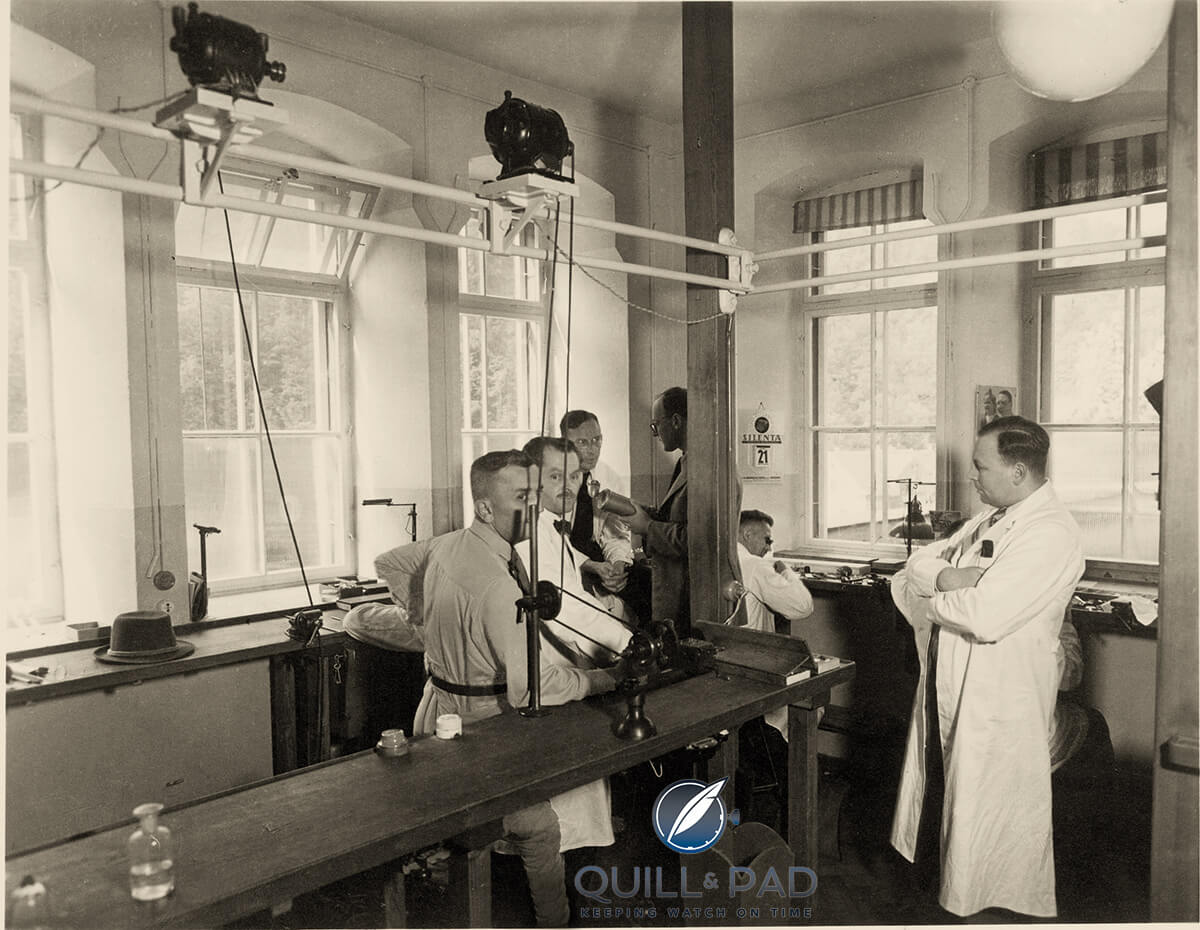
Dr. Ernst Kurtz and some of his watchmakers at Ufag in 1939
It was Urofa and Ufag who kickstarted the first production of calibers for wristwatches as well as complete timepieces for the wrist. These high quality watches were offered under the brand name Tutima from 1927.
Glashütte’s diversity came to an abrupt stop in the wake of World War II. Under Soviet occupation, all the city’s companies were nationalized and merged into one combine.
On top of that, the Russian forces dismantled the production machines, leaving the industry in pitiful shape.
On July 1, 1951, VEB Glashütter Uhrenfabrik (“Glashütte watch factory”) was founded from this nationalization process. Firms that once again exist today, such as A. Lange & Söhne and R. Mühle & Son, were merged under one name at that time.
Until Germany’s reunification in 1989, wristwatches and other mechanical devices were produced by VEB Glashütter Uhrenfabrik for Eastern Bloc countries and even at times exported to the West.
The new grandeur of Glashütte
After Germany’s reunification, another watchmaker named Lange re-established fine watchmaking in Glashütte: Walter Lange.
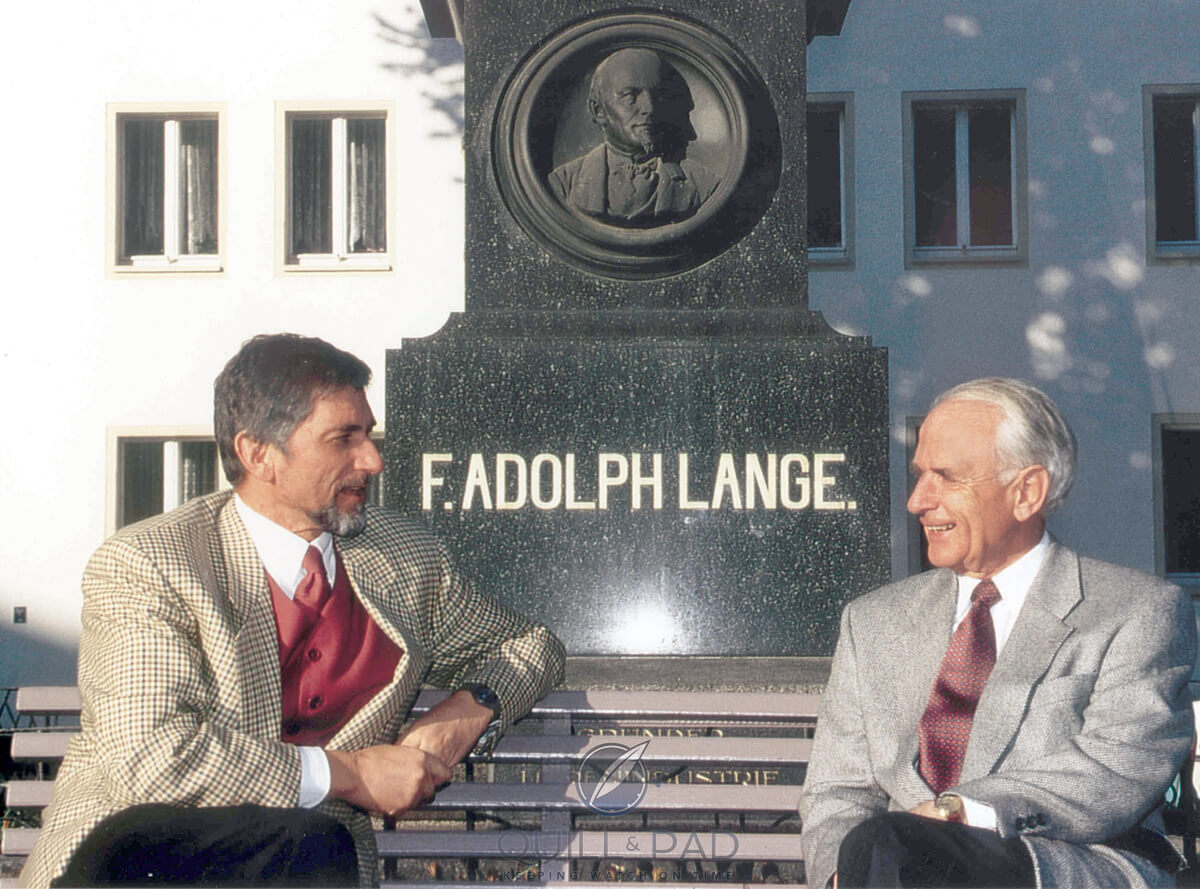
Günther Blümlein and Walter Lange at the F.A. Lange memorial in Glashütte in 1991
With the foundation stone laid for the new Lange manufactory, the founder’s great-grandson, the late Walter Lange, also a watchmaker, ushered Glashütte into a new era. “We didn’t have much at that point,” Walter Lange once reminisced. “We had no watches that we could build and sell; we had no employees, no building, and no machines. All we had was the vision of once again crafting the world’s best watches in Glashütte.” (For more on Walter Lange, see The Life And Times Of A. Lange & Söhne Re-Founder Walter Lange.)
And this is exactly what the people at A. Lange & Söhne did with the help of late co-founder Günter Blümlein and what became the Richemont Group.
Today, A. Lange & Söhne’s timepieces are considered among the best in the world, not only in terms of their cutting-edge technology but also with regard to their sublime finishing.
The Lange 1, which became an iconic symbol of the brand’s new era since 1994 is legendary thanks to its unique dial layout, which includes a signature large date. Not to mention the strictly limited and highly sought-after Pour le Mérite collection reserved for the most exceptional examples of fine Saxon watchmaking (see Why The A. Lange & Söhne Tourbillon Pour le Mérite Is One Of The Most Historically Important Modern Wristwatches and Why I Bought It: A. Lange & Söhne Pour Le Mérite Tourbillon).
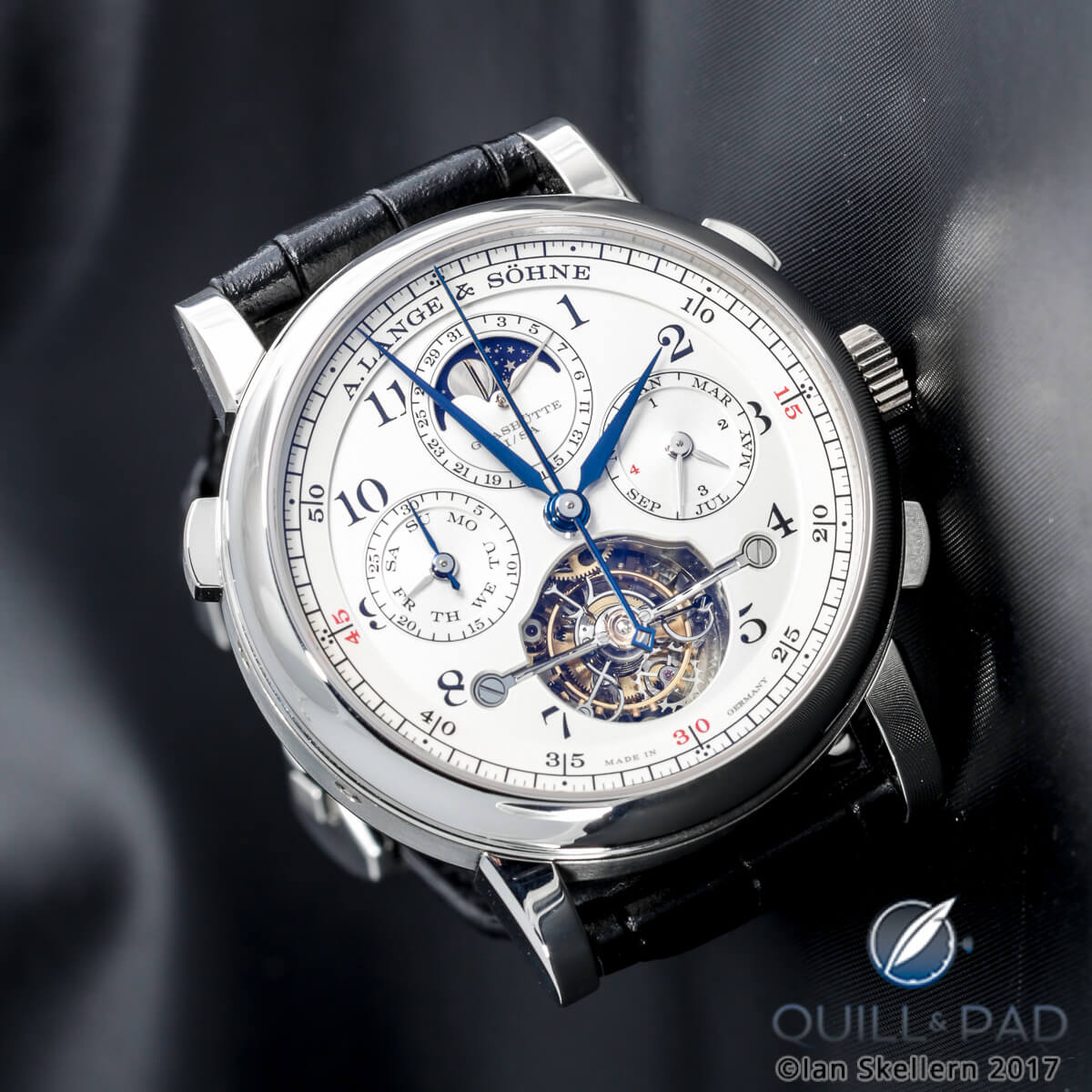
A. Lange & Söhne Tourbograph Perpetual Pour le Mérite
The A. Lange & Söhne Tourbograph Perpetual Pour le Mérite, presented at SIHH 2017, combines three intricate and masterful elements of high watchmaking – tourbillon, split-seconds chronograph, and perpetual calendar – with an intricate constant force fusée-and-chain transmission that is indicative of all the watches in A. Lange & Söhne’s Pour le Mérite line. It is an exceptional example of where this brand is only 23 years after introducing its first modern wristwatches.
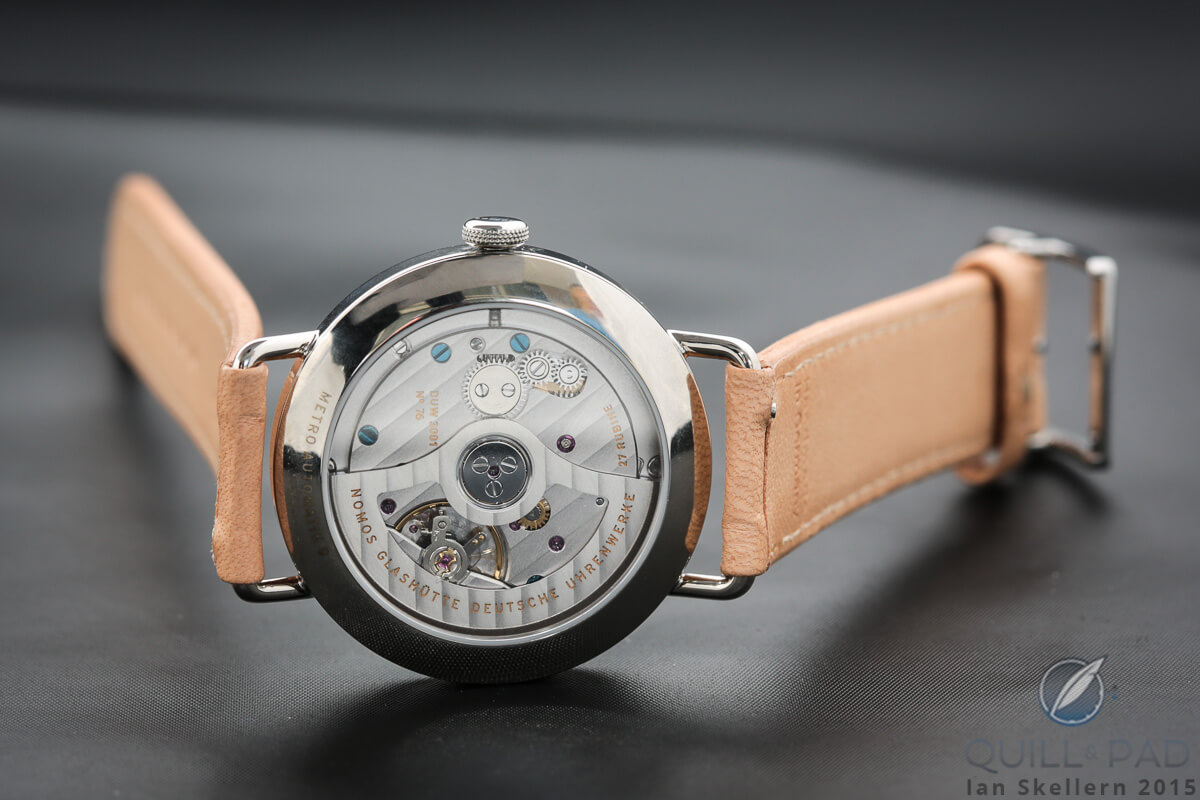
Nomos Glashütte’s automatic Caliber DUW 3001, the heart of the brand’s Neomatik collection
The renaissance of A. Lange & Söhne became a catalyst for the watch industry in Glashütte, even though it was Nomos Glashütte who managed to get on the market first with its Bauhaus-style wristwatches. And in less than 25 years the brand founded by Roland Schwertner has risen up as the largest manufacturer of high-end mechanical timepieces by volume in Germany.
Today Nomos Glashütte is a full-blown manufactory (see How Does Nomos Glashütte Make A Beautiful Watch With Manufacture Movement For Under $3,000?).
But it is the continued success of A. Lange & Söhne, which coincided with the newly widespread popularity of mechanical watches, that encouraged many others to establish companies in Glashütte, adding many old and new names to the scene.
The timepieces of Glashütte Original, founded from the remains of VEB Glashütter Uhrenbetrieb (GUB), embody the finest traditions of Saxon time measurement. This brand shows its prowess in impressive complications and sophisticated craftsmanship.
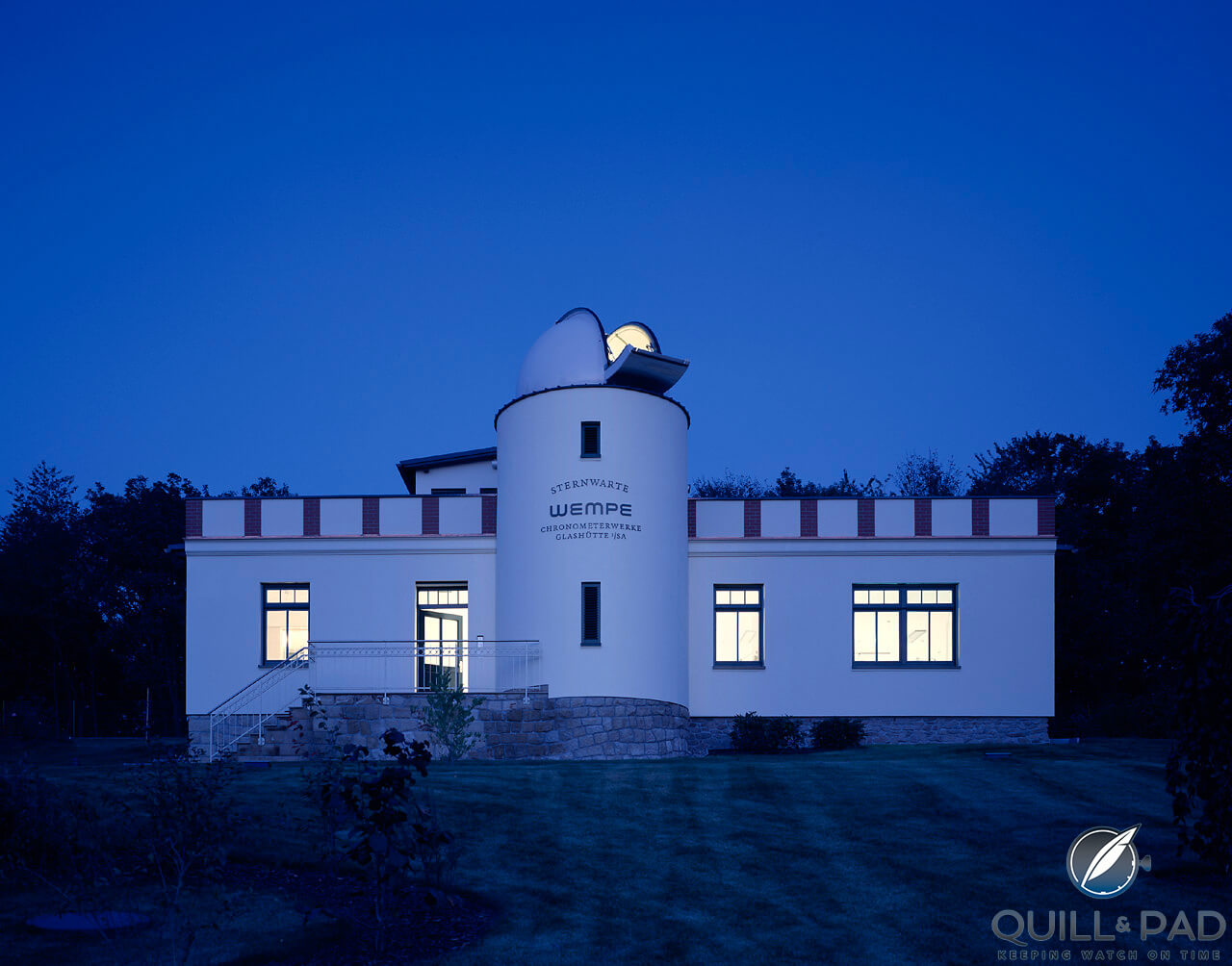
The impressive Wempe building over Glashütte, which also houses the first German testing center for chronometers
In 2005, Wempe Jewelers from Hamburg, Germany, which is also historically linked to Glashütte, acquired the observatory ruin (from Nomos Glashütte’s Schwerter, by the way) and rebuilt it as the first German testing center for chronometers in addition to housing its own assembly workshops.
Since 2006, Wempe has produced two lines of wristwatches there: Wempe Chronometerwerke Glashütte i/SA and the more accessible Wempe Zeitmeister Glashütte i/SA.
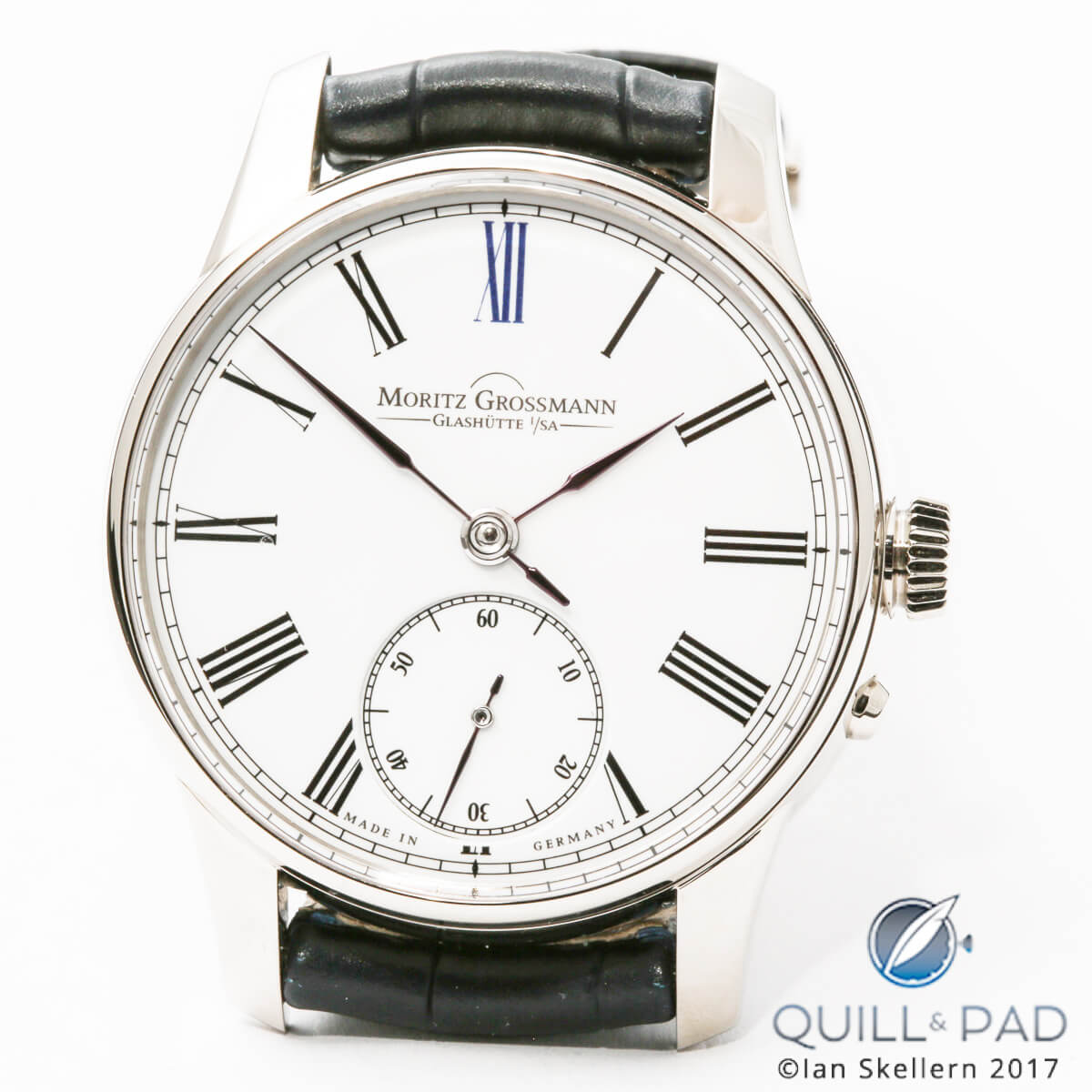
New at Baselworld 2017 by Moritz Grossmann: a 41 mm Atum model with a sumptuous oven-fired (grand feu) enamel dial
Moritz Grossmann, which had never previously been a conventional brand, has also attained new life as a luxury marque under the leadership of Christine Hutter. A watchmaker herself, she successfully revived the innovative spirit of this founding father. From the Grossmann balance to the violet-tempered hands, nearly every part of this brand’s watches are manually crafted in its brand-new and well-equipped workshop.
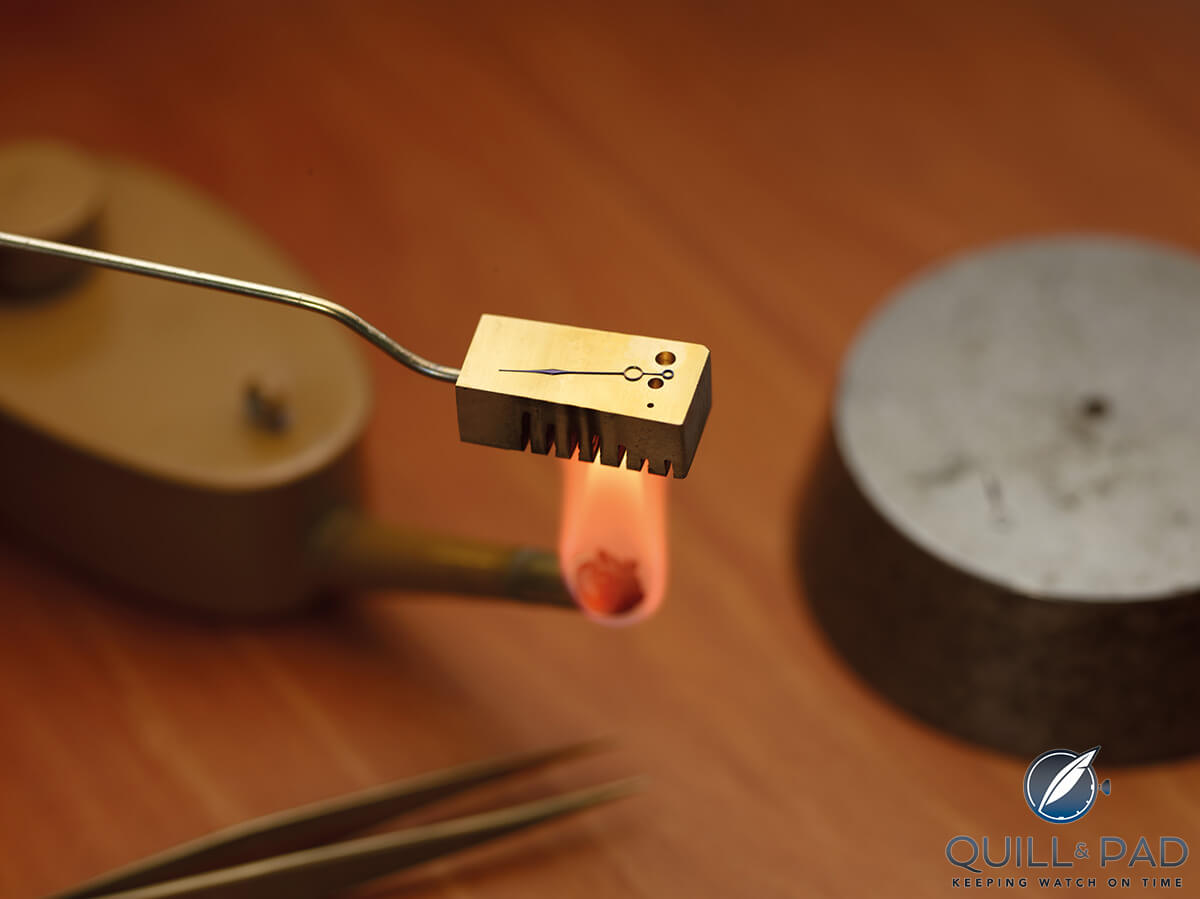
Tempering a Moritz Grossmann hand for a Benu model just the right shade of violet
And then there is Tutima
Contrary to the other brands, Tutima never really disappeared from the watch scene in Germany. Since the 1960s under the leadership of Dieter Delecate, the company has produced timepieces, mostly chronographs and pilot’s watches, in a Lower Saxony community in what was previously called West Germany called Ganderkesee.
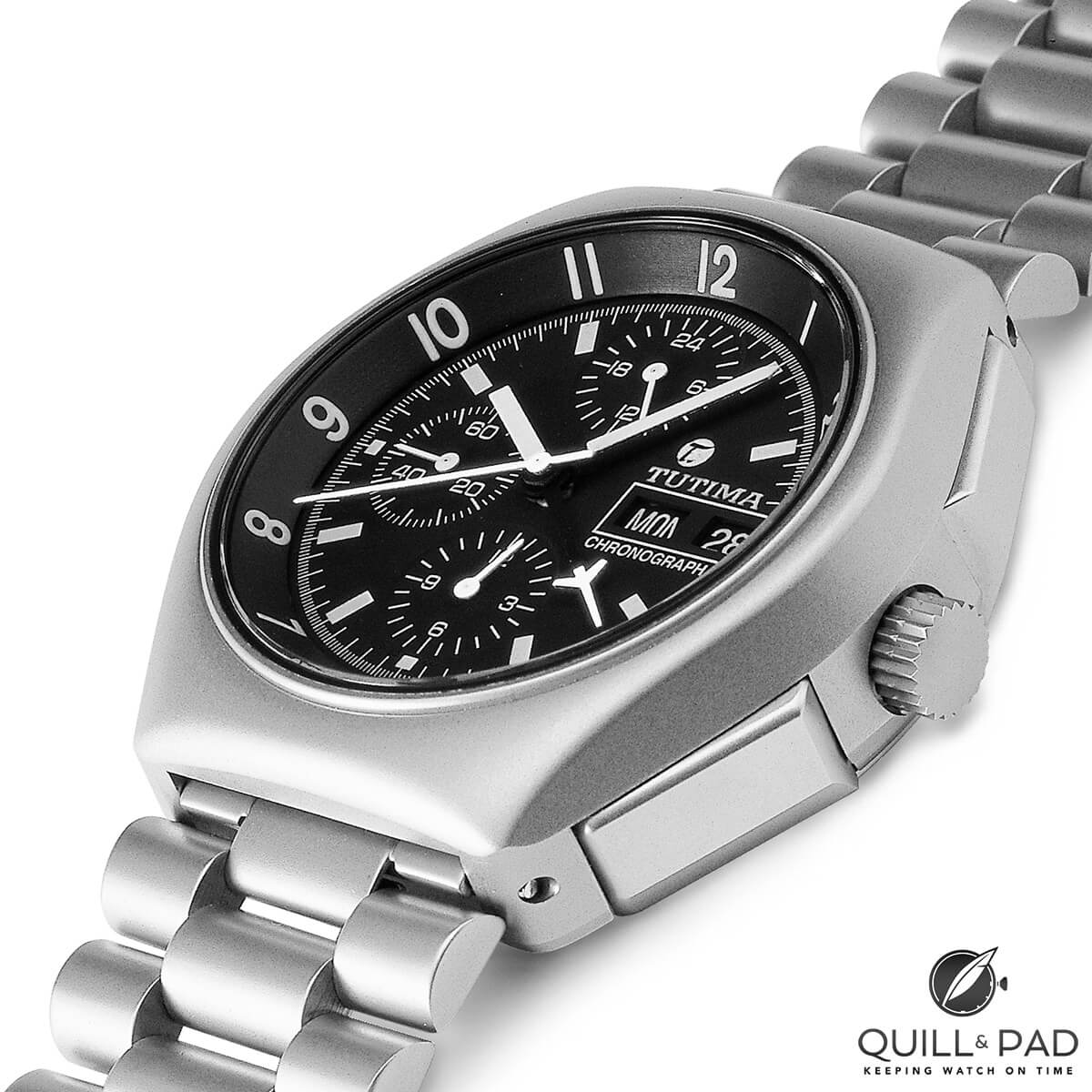
Tutima’s legendary Reference 798, a military chronograph that became the official pilot’s watch of NATO in 1984
The legendary Tutima Military Chronograph Reference 798, the official pilot’s watch of NATO in 1984, is a good example of why this brand remained popular in the interim.
To commemorate the company’s return to Glashütte in 2011, Tutima’s watchmakers had something very special up their sleeves: the first minute repeater to be completely developed and produced on German soil.
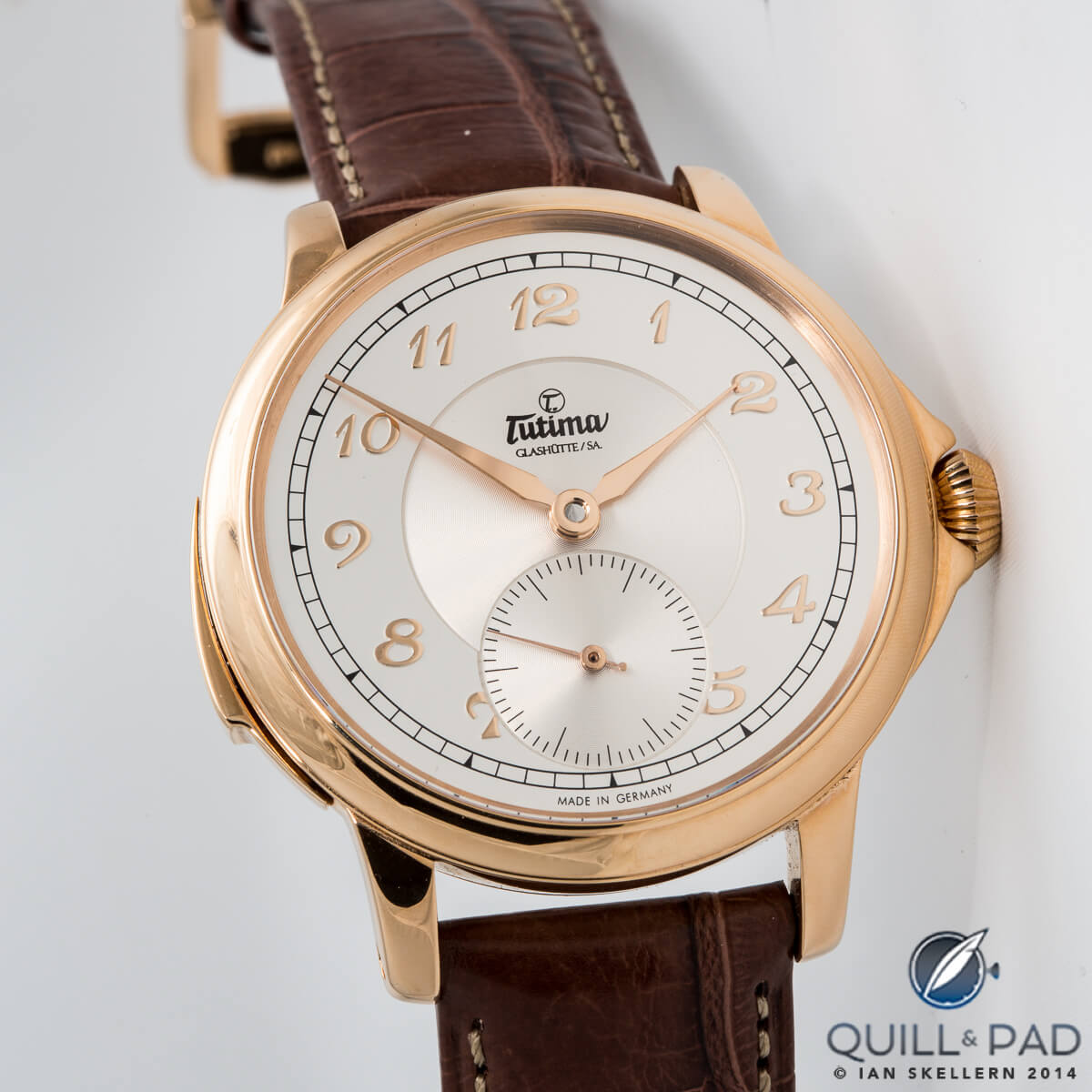
Tutima Hommage Minute Repeater in red gold with classic dial
The Hommage repeater literally rang in a new era in the company history and was soon followed by some amazing new lines like the Saxon One, Grand Flieger, M2, and Patria.
After the successful introduction of the Tutima Patria in gold, a three-handed model powered by a more basic version of the Hommage’s caliber, this family business now celebrates its ninetieth anniversary with the premiere of Caliber T659, another movement entirely developed and crafted in-house in Glashütte.
It is a completely new movement developed from the design of the Glashütte Urofa Caliber 59 from the 1940s that powered the historic Tutima pilot’s chronograph, which was the first German chronograph with what the Germans called “Tempostopp” and additive stopping – known today as flyback.
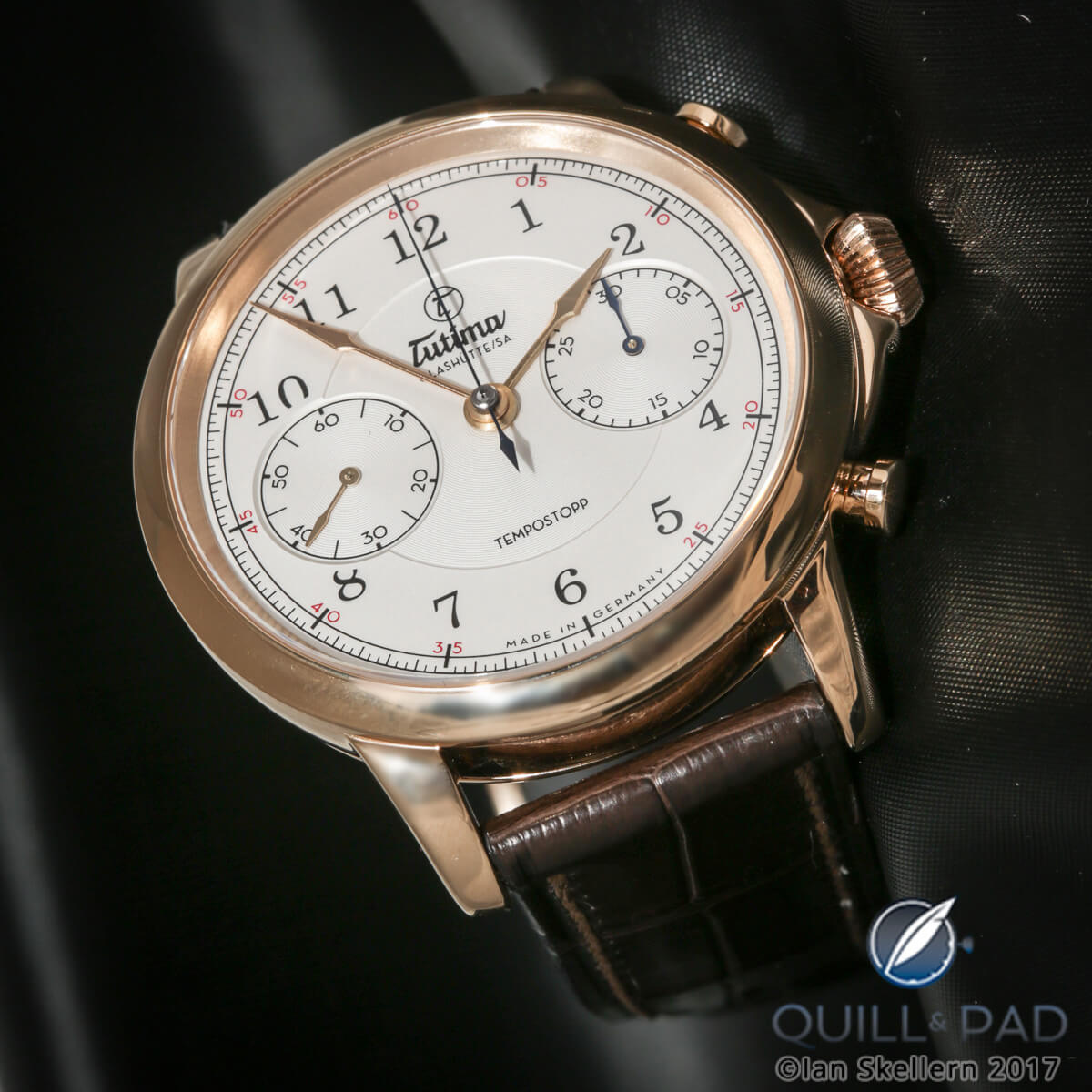
Tutima Tempostopp
Comprising 236 parts, this exquisite movement is also one of the very few “made in Glashütte” chronograph calibers. It powers the brand-new Tutima Tempostopp.
Nestled in its quiet valley, the town of Glashütte today once again offers everything that thrills collectors and fans, literally in a tiny nutshell, as all kinds of great and small complications alongside design and extreme sports watches are produced in this Mecca of timekeeping.
Glashütte’s skilled watchmakers craft mechanical treasures with unique features, such as the three-quarter plate and Glashütte wave decoration, which is similar to but distinct from Geneva waves, spreading the unique quality associated with Glashütte out into the watch world at large.
For a watch to have the “made in Glashütte” predicate on the dial, it must have at least 50 percent of the movement’s added value accomplished in Glashütte, protecting the noble traditions and historical significance of the town and offering high-end horology off the beaten Swiss paths.
Quick Facts A. Lange & Söhne Tourbograph Perpetual Pour le Mérite
Case: 43 x 16.6 mm, platinum
Movement: manually winding Caliber L133.1 with fusée-and-chain transmission and one-minute tourbillon
Functions: hours, minutes; split-second chronograph with minute counter, perpetual calendar, moon phase
Limitation: 50 pieces
Price: €480,000
Quick Facts Tutima Tempostopp
Case: 43 x 12.95, 18-karat pink gold
Movement: manually wound Caliber T659, reverse-engineered and improved homage to Urofa Caliber 59, integrated chronograph with column wheel, free-sprung screw balance, hand-engraved balance cock, 21,600 vph/3 Hz frequency, 65-hour power reserve
Functions: hours, minutes; flyback chronograph with jumping minute counter
Limitation: 90 pieces (celebrating 90 years of Tutima)
Price: $29,500
Trackbacks & Pingbacks
-
[…] we remember the outstanding tradition of Germany’s watchmaking “metropolis” Glashütte (see Made In Germany_ The Glory Of Glashütte), one person not to go missing from historical homage is Moritz Grossmann (1826–1885). His name […]
-
[…] history of Tutima is inextricably linked to the history of Glashütte, the German city whose watch industry was founded in 1845 by Ferdinand Adolph […]
-
[…] back in 1994, the A. Lange & Söhne Lange 1 not only opened a new chapter in the history of the Glashütte-based luxury manufacture, it also set a trend with its unique dial layout featuring an off-center time […]
-
[…] Glashütte, the nearby Mecca of fine timepieces (see Made In Germany: The Glory Of Glashütte), Lang was an apprentice in precision mechanics for three years, which he followed by earning a […]
-
[…] meteoric rise of Nomos over the past years is partially due to the fact that the Glashütte-based watch brand is always up for a good […]
Leave a Reply
Want to join the discussion?Feel free to contribute!





















































Very interesting article but it is sad that the seminal contribution of Hans Pfeiffer has been omitted. It is my understanding that he bought the VEB (including therefore Lange) after German reunification and successfully founded Gashűtte Original. Walter Lange’s consortium had to obtain the rights to the original name from him. Pfeiffer was a remarkable man, an electronics technician and watch enthusiast who became wealthy by inventing a major advance in Xray tomography. In the years before the Swatch Group buy out, GO produced excellent high-end mechanical watches.
HI Tim, you are right: Heinz W. Pfeifer (not Hans) bought the VEB, but not until 1994. Walter Lange had already obtained the rights to his family’s name in 1990.
Was Heinz W. Pfeifer VEB’s owner until Swatch bought the company in 2000?
Yes. There were other partners involved, but yes.
Correction: Sorry, it was Heinz W Pfeiffer, not Hans.
(I should know not to trust my memory)